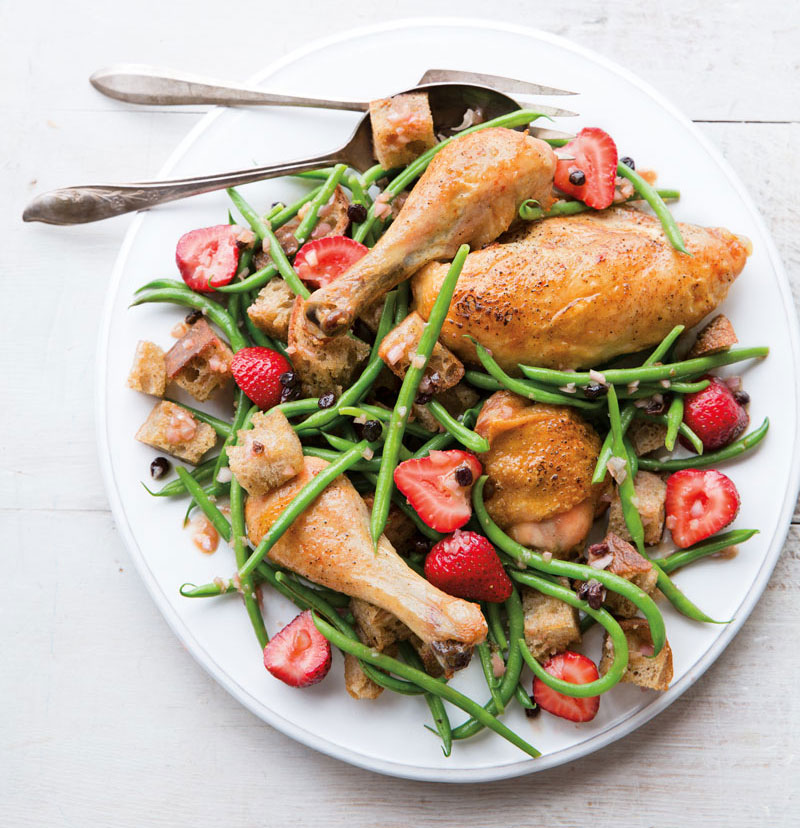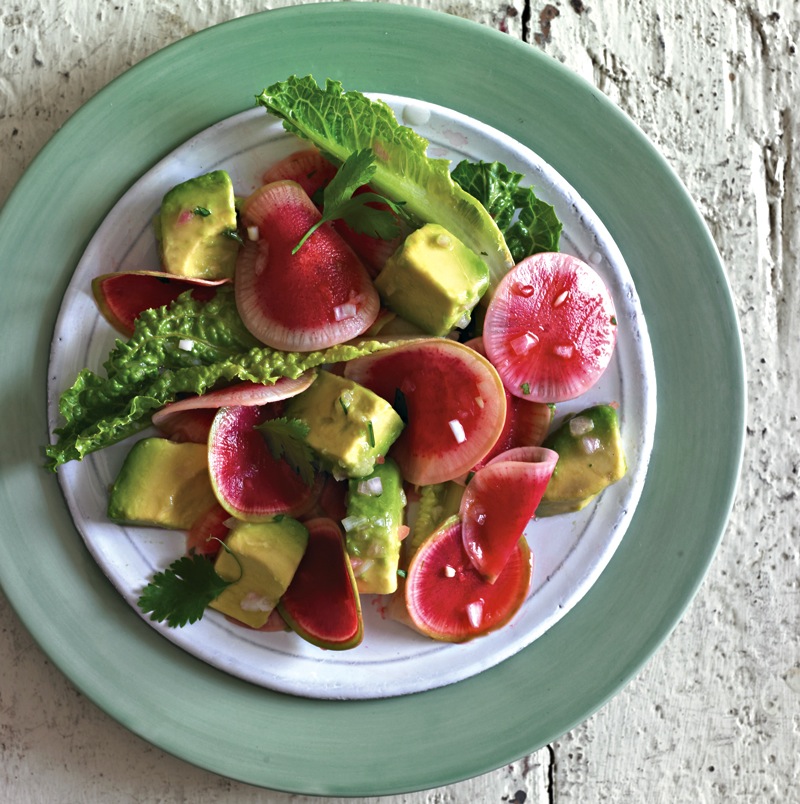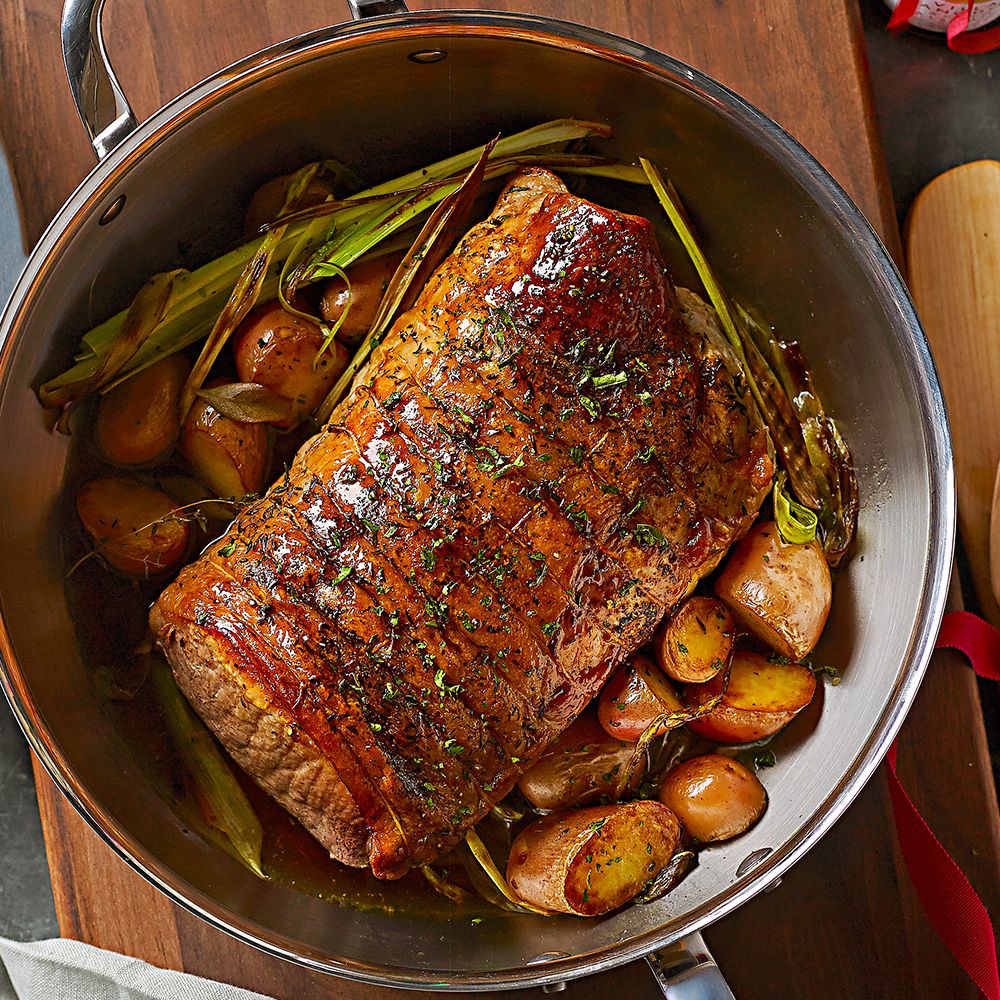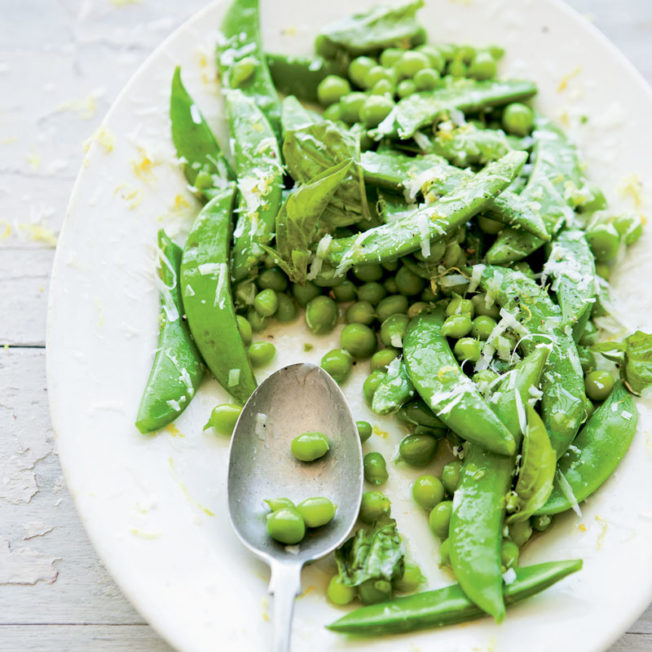Seven Spring Fruits & Vegetables (And How to Cook Them)

Sure, one must respect the knobby, ugly, workhorse vegetables of winter. And cold-weather citrus is certainly delightful. But spring can compete with summer when it comes to producing a rainbow of delicious, good-for-you treats at the farmer’s market, farm stand or garden. We’re so relieved when the season’s bounty finally makes a cameo each year. Here are seven popular in-season fruits and veggies we couldn’t be more excited to see back in the market.
1. Strawberries

Strawberries are sort of a category unto themselves, aren’t they? Americans obsess over strawberry season, and for good reason: When they’re fresh, and not imported, they’re one of the best foods in the world (particularly wild strawberries). Though it’s tempting to use them solely in sweet applications such as shortcakes, tarts, cakes, ice cream, and the like, don’t forget that they can be easily folded into salads and other savory dishes. This chicken and bread salad?with haricots verts?is an excellent example. Mustard, red wine vinegar, currants and shallot form a dressing that marry the eclectic elements beautifully.
2. Radishes

As is true of berries, one can locate radishes year-round, but in much of the country, they come into season right about now. Eat them raw, slathered with butter and sprinkled with sea salt, as has become popular, or slice them thin for salads. Roasting them with butter and lemon juice has also come into fashion, as it accentuates the root’s sweet notes. We’re particularly fond of serving this avocado-and-watermelon-radish salad to guests at dinner parties. The color combo can’t be beat, and it comes together in a flash.
3. New Potatoes

Sometimes we tend to disrespect the potato. We toss it into a cupboard, a crisper, or a drawer and promptly forget about it until it’s wrinkled and sporting eyes. Try to avoid doing that with a new potato. All sorts of varieties of taters (blue; red; long white; Russet; Yukon Gold) may appear in their “new” or “young” state at the market. When they do, snap them up, and cook them that week: These tubers haven’t yet converted their sugars into starch. New potatoes have crisp textures, thin skins, and are ideal for boiling, steaming or roasting, as in this delicious roast pork loin dish.
4. Lettuces

Another supermarket standby we tend to take for granted is good old lettuce. Various kinds come into season throughout the year, and great lettuce can be sweet, crisp and almost buttery in texture. Use it in salads and spring rolls, layered on to burgers and coddling savory pork in Thai chicken wraps. Keep in mind that, as is true of new potatoes, you want to use it quickly, and don’t let it linger in the refrigerator. Maximize its freshness while you can.
5. Rhubarb
Straddling the line between fruit and vegetable, gorgeous rhubarb brightens markets between March and June in much of the country. Though it is botanically a veggie, it’s often treated as a fruit, as in this raspberry-rhubarb pandowdy fit for a crowd. Look for heavy stalks with shiny skin, and experiment with its sweet and savory sides. Maybe make a rhubarb mostarda to slather on pork chops, or a compote to serve alongside duck breast. Can’t fathom it without its buddy the strawberry? We have plenty of recipes to satiate that desire, too.
6. Peas

Eating fresh peas, not canned or frozen ones, for the first time is like putting on glasses for the first time and seeing the leaves on a tree. Sugar snaps, garden, and English varieties all start cutting verdant swaths through the markets right about now. There’s almost no wrong way to treat them, unless you overcook them. Sugar snaps can be eaten straight from the bag; see if you can’t get a kid to treat them as a snack. (They know the word “sugar” means “tasty.”) Sauted garden peas with basil and pecorino is one of the prettiest, brightest presentations, but our recipe database is packed with peas. (Remember that these love cheese, cream, and pasta, too!)
7. Asparagus?

For those who love it, it’s almost unbearable waiting for asparagus to come in at the market. Light years better than its frozen or not-so-fresh counterparts, it comes in thick and thin spearsboth have their fanswith tightly closed flowery tops. Use yours as soon as you can, or store it upright in an inch of water in the refrigerator, enclosed in a plastic bag. Or wrap it tightly in plastic and store it for three to four days. The sky’s the limit, preparation-wise. Asparagus takes to steaming, baking and grilling. Fold it into risotto, slice it on to pizza, or blitz it into a decadently creamy soup. The only real rule: Try to get your fill before it’s gone for another year.


